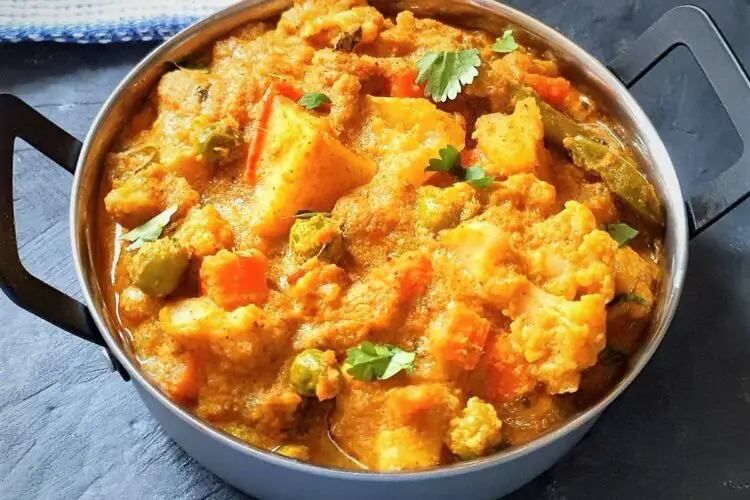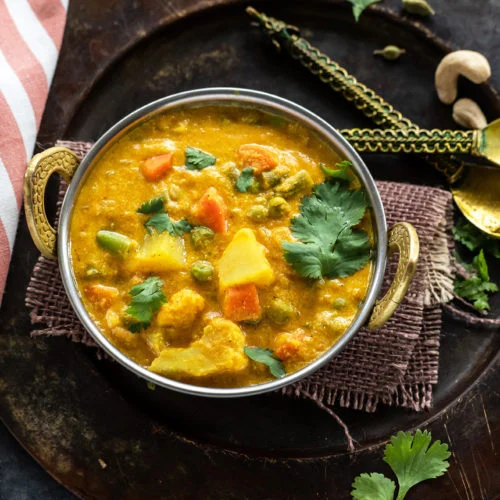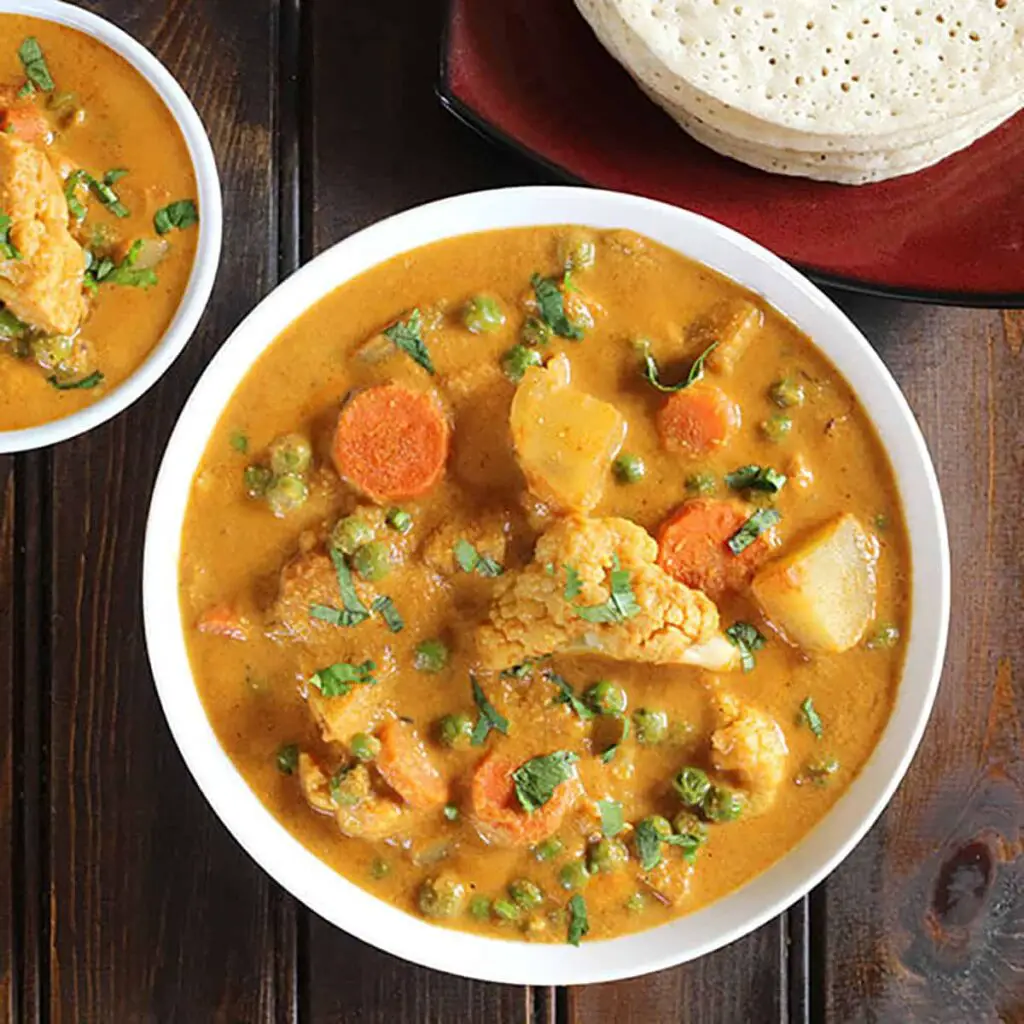Vegetable Korma, a delectable dish that hails from the rich tapestry of Indian cuisine, has transcended boundaries to become a global sensation. Its unique blend of vegetables, aromatic spices, and creamy textures make it a favorite among food enthusiasts. Let’s delve into the intricate world of Vegetable Korma and uncover its secrets.
This dish isn’t just a culinary delight; it carries cultural significance. Originating in the royal kitchens of ancient India, Vegetable Korma was a dish fit for kings. Today, it has become a symbol of hospitality and celebration. In a world that celebrates diversity in food, Vegetable Korma’s popularity is on the rise. Its harmonious blend of flavors, coupled with its vegetarian and vegan-friendly nature, makes it a go-to choice for many.
From family gatherings to festive celebrations, This recipe is a versatile dish suitable for various occasions. Understanding when and how to serve it adds a touch of culinary finesse.
Health Benefits of Vegetable Korma
A. Nutrient-Rich Ingredients
Beyond its sumptuous taste, The recipe is a powerhouse of nutrients. The combination of vegetables and spices contributes to a well-balanced and nutritious meal.
B. Impact on Overall Well-Being
Exploring the health benefits of Vegetable Korma, from aiding digestion to boosting immunity, highlights its role as more than just a delicious dish.
FAQs
- Is Vegetable Korma a spicy dish?
The Korma is known for its mild and balanced flavors, making it suitable for those who prefer less spicy dishes.
- Can I customize the vegetables in Vegetable Korma?
Absolutely! Feel free to experiment with different vegetables based on your preferences and what’s in season.
- Is Vegetable Korma a complete meal on its own?
Vegetable Korma can be a standalone dish, but it is often served with rice, bread, or other accompaniments for a more satisfying meal.
- How do I make the dish more creamy?
To enhance the creaminess, you can add coconut milk or cashew paste during the cooking process.
- Can I freeze Vegetable Korma for later consumption?
Yes, Vegetable Korma freezes well. Store it in an airtight container for future enjoyment.
Conclusion
In conclusion, Vegetable Korma transcends its culinary status, embodying a cultural heritage and a symphony of flavors. Armed with knowledge, venture into your kitchen, and embark on a culinary journey that promises to tantalize your taste buds. Experience the magic of Vegetable Korma – a dish that unites tradition, taste, and the joy of cooking.
You Might Also Like:
- Cinnamon Tea for Weight Loss
- chicken chatpata recipe
- Oreo Mug Cake Recipe
- Paneer Dum Biryani Recipe
- Aloo paneer paratha recipe
follow us on Instagram, Facebook, and youtube




